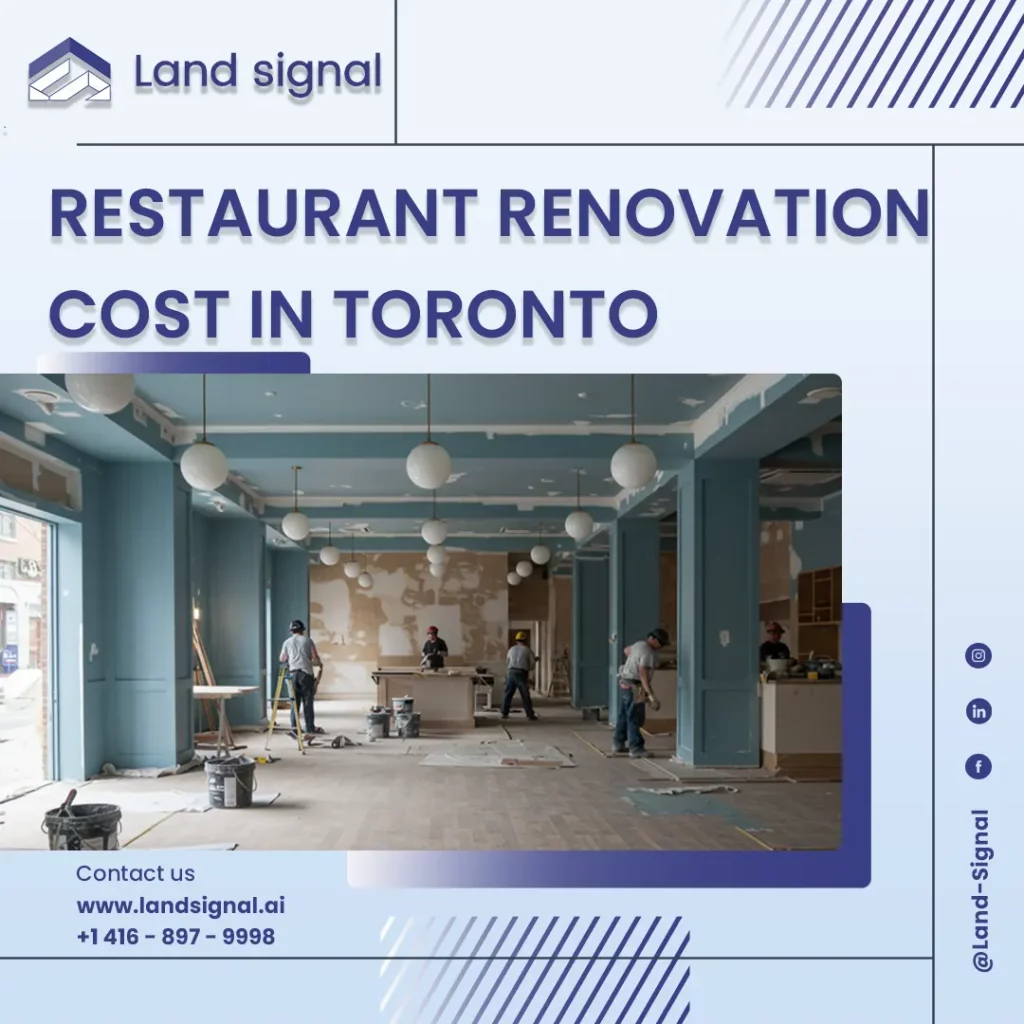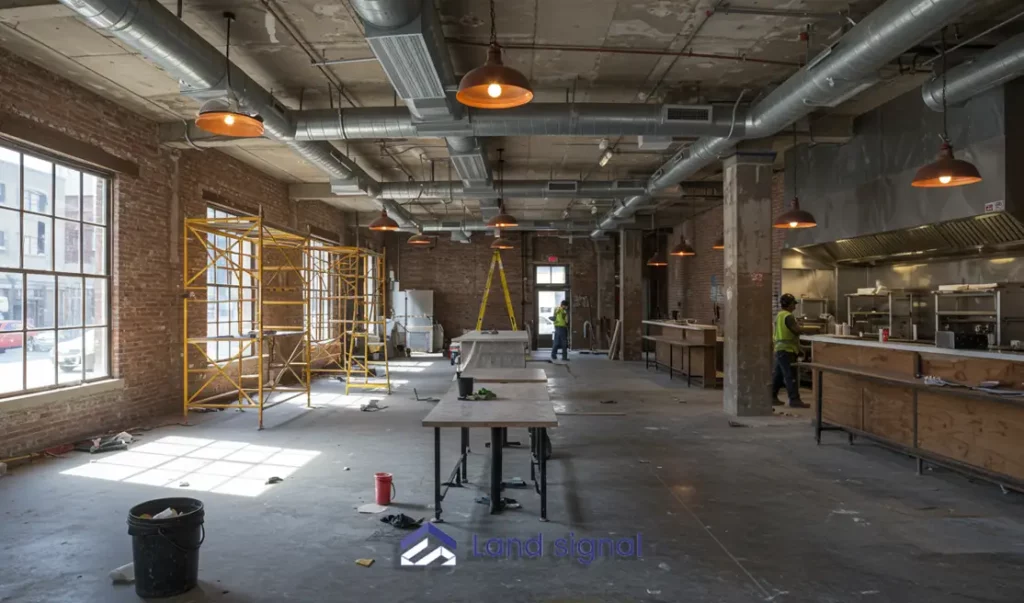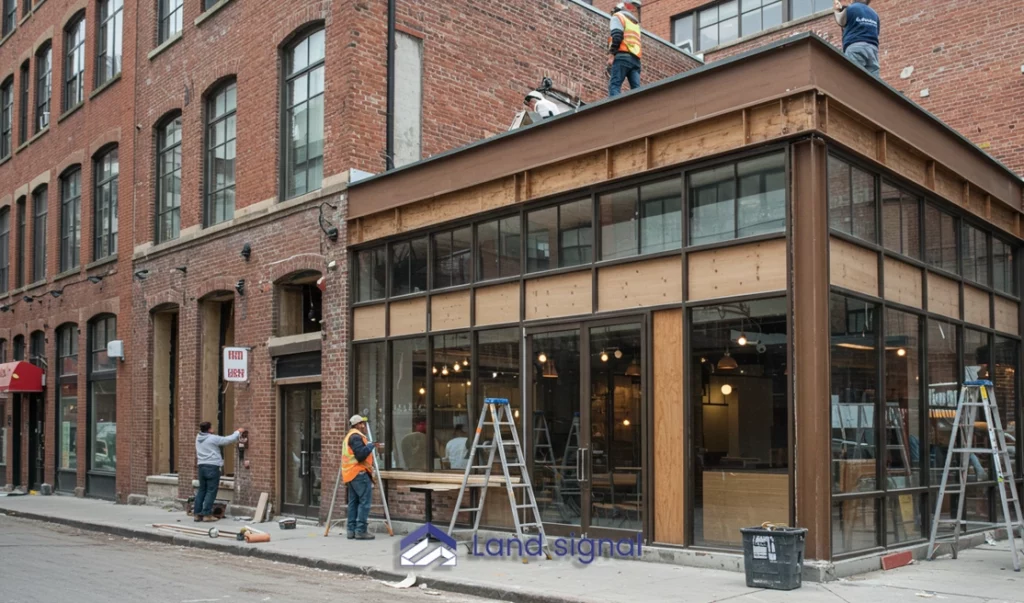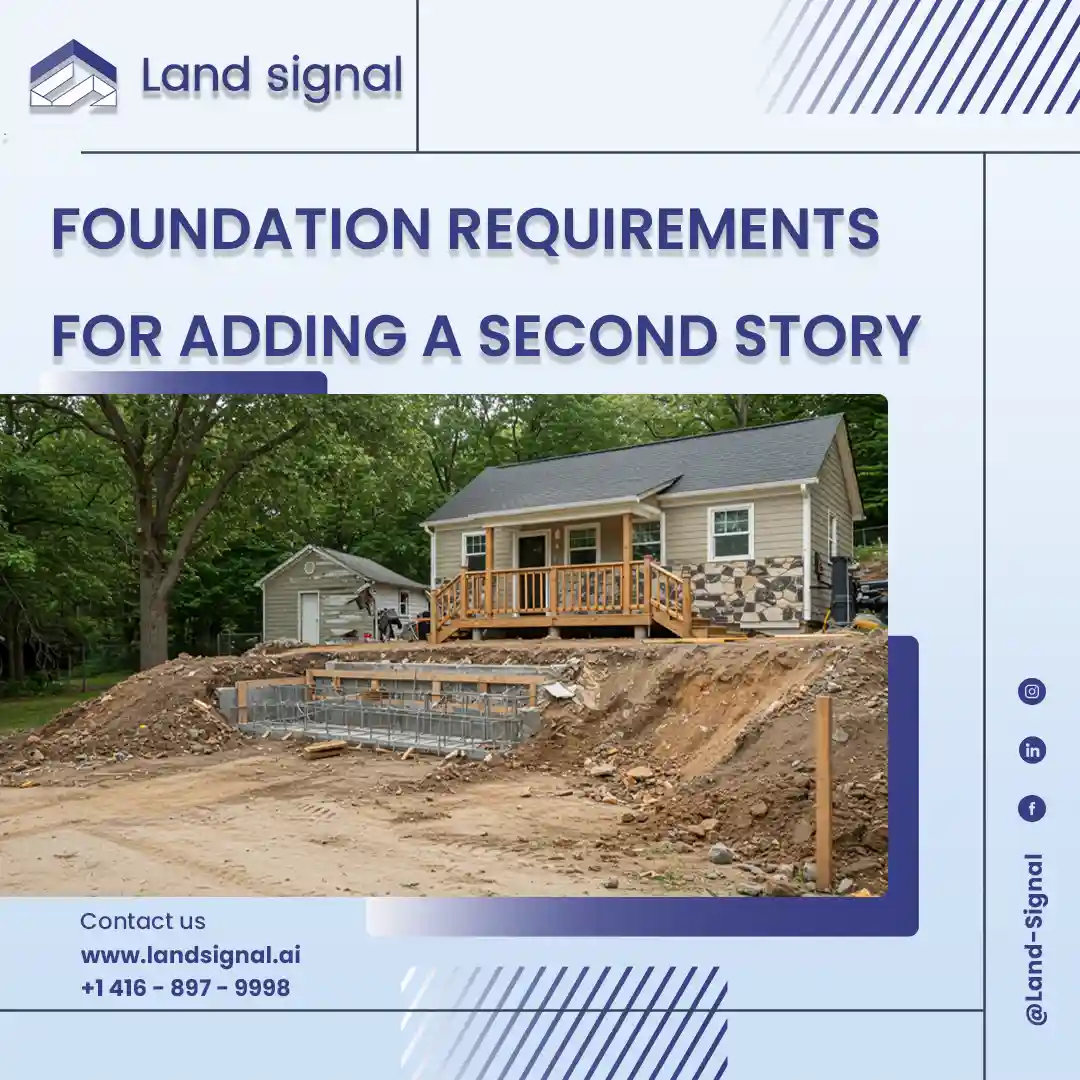Renovating a restaurant is a multifaceted endeavor that requires meticulous planning and a thorough understanding of the various factors influencing costs. In the dynamic landscape of the food service industry, a well-executed renovation can significantly enhance the dining experience, align the establishment with contemporary design trends, and improve operational efficiency.
However, the financial investment for restaurant renovation costs involved is substantial, and costs can vary widely based on numerous variables. For instance, the average cost to build a restaurant ranges from $200 to $850 per square foot, depending on location, restaurant type, and size. Understanding these cost determinants is essential for restaurateurs aiming to undertake renovations in 2025, as it enables the development of a realistic budget and the implementation of cost-effective strategies.
This comprehensive guide explores the key components influencing restaurant renovation costs in Toronto, provides a detailed breakdown of estimated costs, and offers strategic insights to optimize your investment.
Start Your Project with Confidence
At Land Signal, we assist with construction and renovation permits, as well as Garden House and Laneway Suite designs. Let our experts guide you through every step.
Factors That Influence Restaurant Renovation Costs
Several critical factors can impact the overall cost of renovating a restaurant. Recognizing these elements will aid in creating a realistic budget and ensuring a successful renovation project.
1. Scope of the Renovation
The extent of the renovation plays a pivotal role in determining costs. Minor cosmetic updates, such as repainting and updating décor, are generally less expensive than comprehensive overhauls that involve structural modifications, extensive system upgrades, or complete redesigns. Clearly defining the project’s scope helps in allocating resources effectively and avoiding unforeseen expenses.
2. Location and Size of the Restaurant
Geographical location significantly influences renovation costs due to varying labor rates, material prices, and permit fees. For instance, urban areas with higher living costs typically exhibit elevated renovation expenses compared to rural regions.
Additionally, the restaurant’s size directly impacts costs; larger spaces require more materials and labor, leading to increased expenditures. According to industry reports, the national average restaurant renovation cost is approximately $160 per square foot, but this can vary substantially based on location.
3. Design and Aesthetic Choices
The choice of design and aesthetics significantly affects renovation budgets. Opting for high-end materials, custom furnishings, and intricate designs can escalate costs, whereas selecting standard materials and simpler designs can help manage expenses. Balancing aesthetic aspirations with budgetary constraints is essential to achieve a cost-effective yet appealing outcome.
4. Kitchen Upgrades and Equipment Costs
Upgrading kitchen equipment is often a substantial component of restaurant renovations. Investing in new, energy-efficient appliances can enhance operational efficiency and reduce long-term utility costs. However, new equipment entails significant upfront costs.
Alternatively, purchasing used or refurbished equipment can offer cost savings; however, it is imperative to ensure that such equipment is in good working condition to avoid future maintenance issues.
Read Also: Kitchen Renovation Cost Toronto | Budgeting & Price Guide
5. Permits and Compliance Requirements
Navigating the regulatory landscape is crucial in restaurant renovations. Securing necessary renovation permit Toronto and ensuring compliance with local building codes, health regulations, and accessibility standards can incur additional costs and time. Engaging professionals familiar with these requirements can facilitate a smoother approval process and help avoid potential legal complications.
Breakdown of Estimated Restaurant Renovation Costs
Understanding the specific components of restaurant renovation cost can aid in detailed budgeting and financial planning. Below is a breakdown of typical expenses associated with such projects.
Cosmetic Upgrades (Paint, Décor, Flooring)
Cosmetic enhancements involve updating the visual aspects of the restaurant to create a fresh and inviting atmosphere. This includes painting, updating décor, and replacing or refurbishing flooring. Costs for these upgrades can vary widely based on material choices and labor rates. For example, hardwood flooring may cost between $6 to $12 per square foot, while epoxy flooring ranges from $3 to $12 per square foot, including installation.
Kitchen Renovations & Equipment
Renovating the kitchen often involves significant expenses due to the need for specialized equipment and adherence to health and safety standards. Outfitting a 1,000-square-foot kitchen, including equipment, can average around $75,000. Costs can fluctuate based on whether new, used, or leased equipment is selected. While new equipment offers reliability and the latest technology, used equipment can provide cost savings if properly vetted.
HVAC, Plumbing, Electrical
Upgrading essential systems such as heating, ventilation, air conditioning (HVAC), plumbing, and electrical is critical for operational efficiency and compliance with building codes. These systems ensure a comfortable environment for patrons and staff and support the functionality of kitchen and dining areas. Costs for these upgrades can be substantial, especially if the existing infrastructure requires significant modifications to accommodate new layouts or equipment.
Furniture & Fixtures
Investing in furniture and fixtures contributes to the restaurant’s ambiance and customer comfort. This includes seating, tables, lighting, and decorative elements. Costs can vary based on quality, design, and sourcing. Opting for used or refurbished furniture can offer savings without compromising on style .
Permits & Inspections
Securing necessary permits and undergoing inspections are integral to the renovation process. Permit fees can range from $50 to $1,000, depending on the project’s scope and location. Additionally, compliance with regulations such as the Americans with Disabilities Act (ADA) may necessitate further modifications and associated costs.
Labor & Contractor Fees
Labor costs constitute a significant portion of the renovation budget. Engaging experienced contractors and skilled laborers ensures quality workmanship and adherence to timelines. On average, construction or build-out costs can be around $50 per square foot for a medium-sized restaurant. However, rates can vary based on location, project complexity, and the contractor’s expertise.
Total Estimated Budget
Compiling the above components, the total estimated budget for a restaurant renovation cost can vary widely. For a 5,000-square-foot restaurant, the national average renovation cost is approximately $160 per square foot, totaling around $800,000. In 2025, the average cost to renovate a restaurant is estimated to range from $150 to $300 per square foot, depending on factors such as location, size, and the extent of the renovation.
For a 5,000-square-foot establishment, this translates to a total renovation cost between $750,000 and $1.5 million. These figures can fluctuate based on regional labor rates, material costs, and specific project requirements.
Read Also: Calculate Your Home Renovation Costs Toronto
Cost-Saving Tips for Restaurant Renovations
Implementing strategic measures can help manage and potentially reduce restaurant renovation costs without compromising quality or functionality.
1. Prioritize Essential Upgrades
Focus on renovations that directly impact customer experience and operational efficiency. Identifying and addressing critical areas ensures that the most impactful improvements are made within budget constraints. For instance, upgrading outdated kitchen equipment can enhance food preparation efficiency, while refreshing the dining area’s décor can improve customer satisfaction.
2. Consider Phased Renovations
Implementing renovations in phases allows for spreading costs over time and minimizes disruptions to operations. This approach enables continuous revenue generation while improvements are underway. For example, scheduling kitchen upgrades during off-peak seasons can reduce the impact on daily operations, allowing the restaurant to remain open and maintain cash flow.
3. Buy Used or Refurbished Equipment
Purchasing high-quality used or refurbished kitchen equipment can lead to substantial savings. Ensure that such equipment is thoroughly inspected and meets current health and safety standards to avoid future liabilities. Sourcing from reputable suppliers or attending restaurant equipment auctions can provide access to well-maintained items at a fraction of the cost of new ones.
4. Work with an Experienced Contractor
Engaging a contractor with specific experience in restaurant renovations can provide valuable insights into cost-effective solutions and efficient project management. Their expertise can help navigate potential pitfalls and ensure compliance with all regulations. An experienced contractor can also recommend alternative materials or design approaches that achieve the desired aesthetic and functionality while staying within budget.
Final Thoughts
Renovating a restaurant in 2025 requires careful planning, a clear understanding of the factors influencing costs, and strategic implementation of cost-saving measures. By thoroughly assessing the scope of renovation, considering location-specific variables, making informed design choices, and adhering to compliance requirements, restaurateurs can achieve a successful renovation that enhances both aesthetics and functionality. Implementing the outlined cost-saving strategies further ensures that the project remains within budget while meeting the desired objectives.







